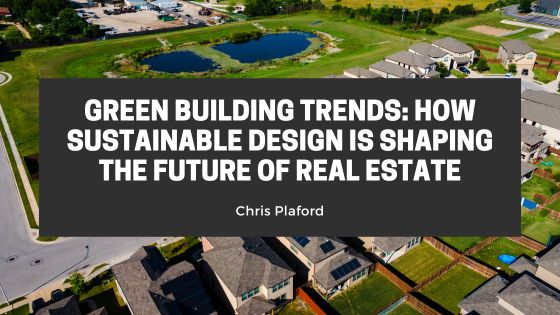Sustainability is no longer just a buzzword in real estate—it’s a driving force reshaping how properties are built, valued, and marketed. As concerns about climate change, energy use, and environmental impact grow, green building trends are gaining momentum across residential, commercial, and industrial sectors. From energy-efficient designs to smart materials, sustainable development is not only good for the planet—it’s becoming a smart business strategy.
Energy Efficiency as a Standard, Not a Bonus
Today’s buyers and tenants increasingly expect energy-efficient features. Green buildings are designed to use less power for heating, cooling, lighting, and appliances, thanks to improved insulation, high-efficiency HVAC systems, and LED lighting. Solar panels, geothermal systems, and advanced energy management technologies are becoming mainstream additions rather than luxury upgrades.
According to the U.S. Department of Energy, buildings account for about 40% of total energy consumption. Developers and investors are recognizing that reducing this footprint can lead to lower utility costs, higher property values, and long-term savings. Energy-efficient certifications like ENERGY STAR and LEED (Leadership in Energy and Environmental Design) are becoming critical markers of quality and innovation in real estate.
Sustainable Materials and Smart Construction
Another major trend in green building is the use of sustainable, low-impact materials. Recycled steel, reclaimed wood, bamboo, and low-VOC (volatile organic compound) paints are being used to minimize environmental harm during construction and improve indoor air quality for occupants. Prefabricated and modular construction methods, which generate less waste and reduce site disruption, are also gaining popularity.
Innovations in materials science are driving the development of high-performance building envelopes and windows that enhance insulation while maximizing natural light. These changes not only make buildings more environmentally friendly but also contribute to occupant health and comfort—two factors that influence long-term tenant satisfaction.
Water Conservation and Green Infrastructure
With water scarcity becoming a growing concern in many regions, sustainable real estate also focuses on efficient water use. Features like low-flow plumbing, rainwater harvesting systems, drought-resistant landscaping, and greywater recycling help reduce consumption and support local ecosystems.
In urban areas, green infrastructure—such as green roofs, permeable pavements, and rain gardens—helps manage stormwater runoff, reduce the urban heat island effect, and provide natural beauty. These elements contribute to a more resilient and livable environment, making them attractive to municipalities and real estate investors alike.
The ROI of Sustainability
Going green isn’t just about doing the right thing—it’s about future-proofing investments. Sustainable buildings often command higher rents, experience lower vacancy rates, and sell at a premium. Many investors and institutions now prioritize ESG (Environmental, Social, and Governance) factors in their portfolios, making green buildings more attractive in a competitive market.
Government incentives, zoning benefits, and tax breaks further enhance the financial appeal of sustainable development. As climate regulations become stricter, properties that meet or exceed energy and emissions standards will have a clear advantage.
Conclusion: Building a Greener Future
Sustainable design is no longer a niche—it’s the new standard. Green building trends are transforming real estate by aligning environmental responsibility with financial performance. For developers, investors, and buyers, embracing sustainability is more than a choice—it’s a competitive imperative in the future of real estate.
